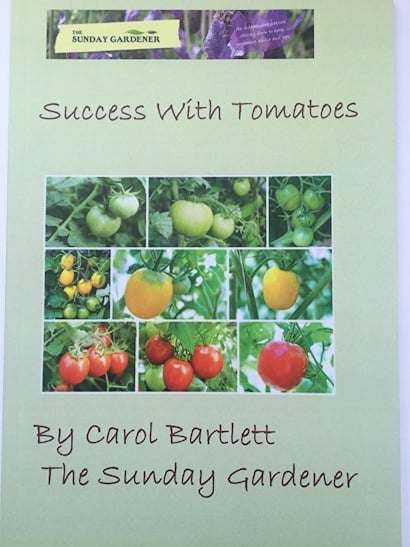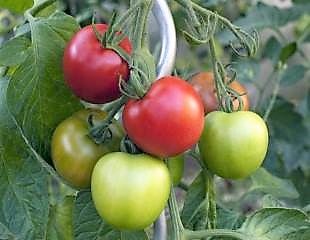
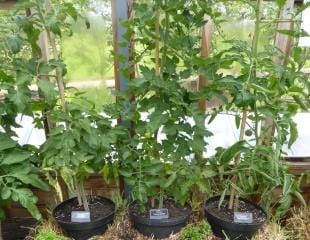
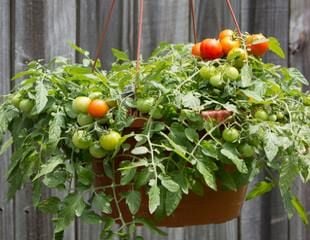
How to identify and deal with tomato blight and common tomato disease
Without doubt, Blight is the most serious and common problem which affects tomatoes and can wipe out the crop.
Blight is an air born pathogen which forms in warm humid weather. It is more common in wet summers, and attacks (almost exclusively,) out door grown tomatoes. The plants develop brown patches and keel over the killer disease. There are no effective sprays, not least because by the time you spot the blight it is almost always too late and it has got a grip.
Although there is no cure for blight, there are various steps you can take to reduce the chances of getting blight .You can find these steps outlined in this video.
Once it strikes, remove all infected leaves.
Tomato plants grown in the greenhouse are much less susceptible to blight.
If you grow tomatoes in an area prone to blight, (the wetter parts of the country) it may be better to grow in a greenhouse or lean to.
You can also grow blight resistant tomatoes, all of which are explained further in the video.
What does Blight look like, see the image below.
Tomato plant with Blight
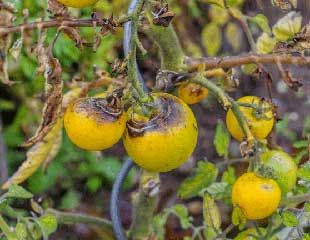
Tomato blight on the leaves
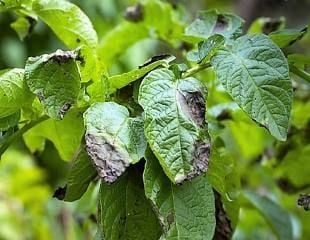
Other Tomato Problems
Unfortunately, there are quite a lot of problems and diseases which can attack tomatoes.
Curling leaves caused by low night temperatures. Ideally, the preferred growing conditions for tomatoes is that temperatures should not fall below 15C. Below this caused leaf curl, which is unsightly but aesthetic, only the crop is just the same..
Yellowing leaves. The yellowing of leaves indicates a magnesium deficiency, and you can correct it by feeding with proprietary tomato food. If it persists despite feeding, it can be too little or too much water.
Greenback where the top of the fruit does not ripen fully caused by lower temperatures or lack of regular feeding.
Blight is the most serious and common problem and is often prevalent in a wet summer. The plants develop brown patches and literally collapse.
This Video explains all about Blight and how to prevent it.
Halo Blight, which is small spots on the fruit surrounded by lighter rings and is a water-borne fungal disease. To minimise the risk, avoid splashing the fruit when you water. See How to grow tomatoes section on watering.
Blossom end rot: unsightly black patches on the underside of the tomato fruit. Caused by irregular watering, and more common in container-grown tomatoes than outdoors.
Botrytis, grey mould, which can also be a problem. To avoid this ensure as much ventilation as possible. Do not crowd the plants and open all vents and doors in the greenhouse.
Many types of tomatoes need support, and this is usually done by staking. The image below right shows how the wrong type of support can cause problems. Here the stem has folded over the support and is close to snapping.
Another problem Split skins

Split skins are one of the most common problems after tomato blight. There are two causes of this: water and temperature fluctuations.
We can minimise the level of water fluctuations a bit by trying to follow a regular watering pattern. Irregular watering causes too much water to go into the fruit, it expands rapidly and the skin splits. Fluctuations in air temperatures also cause this and we have very little control over the autumn weather present as the fruit ripens. It is not uncommon for night time temperature to drop below 7/5C and daytime to reach 20/22C.
A word of caution about split fruit. In the image, I left the fruit to mature for a few days after picking to illustrate the problem. The split in the fruit allows bacteria to enter . You can either disregard that fruit entirely, or if the damage is minimal, cut that part way. It is worth checking how bad the split skin is as bacteria can cause a stomach upset.
What causes a lack of tomatoes and a small crop?
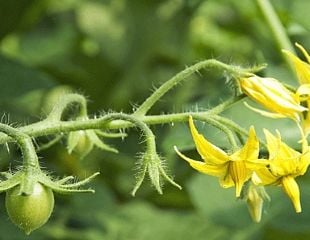
The flowers on tomatoes are important because they become the fruit, i.e. the tomatoes, so the more flowers the more tomatoes. This is clear in the image, some of the spent flowers have become baby green tomatoes with some yellow flowers at the end of the branch, which will also become fruits.
Poor pollination can cause a lack of tomatoes. The flowers need to be pollinated to produce the tomatoes, and this is more of a problem for tomatoes in greenhouses and poly tunnels. Outside, nature does this by pollinating insects, such as bees. It is important to open greenhouse doors, windows and vents to let the bees in to do their work. Commercial growers with large poly tunnels and glass houses will import bees to pollinate. I have seen commercial growers in Iceland growing tomatoes in the depths of winter, utilising the thermal underground heat, and importing boxes of bees to fly around and pollinate.
A lack of fruit can also occur during poor a summer if it is persistently wet and cold. Pollinators do not fly around as much in poor weather conditions.
Top Tips for Growing Tomatoes
Regular watering is really crucial: do not let the plants dry out.
For best results feed regularly as soon as the first flowers appear.
Keep an eye on the plants, thin out leaves and take off side shoots.
Don't give up on them: Tomatoes will crop in a greenhouse until November, after which cut the vines and leave somewhere warm to ripen.
To avoid diseases, if growing under glass, make sure there is good ventilation and air circulation, and avoid splashing the leaves when watering.
Step by step guide
How to grow tomatoes from seed and what to do about weedy seedlings
What are the easiest tomatoes to grow? Cordon or Bush?
How to pot on tomatoes, dos and don'ts, and why it is important.
Hardening off tomatoes for growing outside
Pinching out Side Shoots on tomatoes
The Best way to Water and Feed Tomatoes
How to ripen Green Tomatoes
If you have found these tips helpful, why not buy the book: Success with Tomatoes The Sunday Gardener's guide to growing tomatoes, packed full of practical tips and helpful images, everything you need to know to grow a tasty crop.Reduced from £6.20to £4.20
